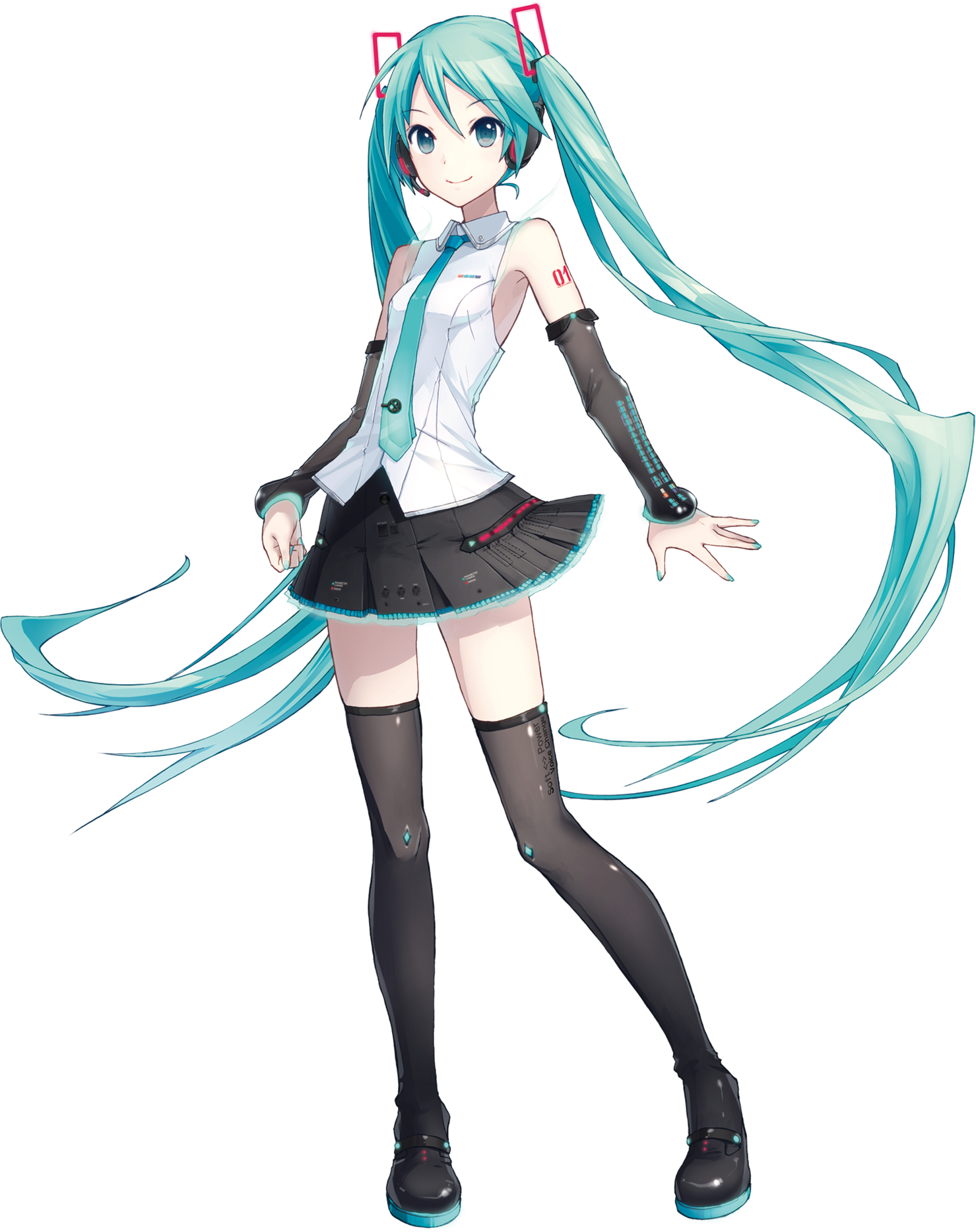

- Japanese vocaloid hatsune miku update#
- Japanese vocaloid hatsune miku upgrade#
- Japanese vocaloid hatsune miku android#
It took him more than a month to complete the commission.

KEI said he could not create an image of a "singing computer" at first, as he did not even know what a "synthesizer" was. Crypton also provided KEI with Miku's detailed concepts, however, Crypton said it was not easy to explain what a "Vocaloid" was to him. When KEI illustrated Miku, he was given a color scheme to work with (based on the YAMAHA synthesizers' signature blue-green colour) and was asked to draw Miku as an android. Her name in Chinese is "Chūyīn Wèilái" (Simplified Chinese: 初音未来 Traditional Chinese: 初音未來). Her codename of "CV01" means "Character Voice 01". It thus means "the first sound from the future." Her name was based on her concept of that when a sound is first spoken. The name was chosen by combining hatsu (初, "first"), ne (音, "sound"), and Miku (未来, a personal name that shares its spelling with the word for "future").
Japanese vocaloid hatsune miku android#
While Crypton is focusing on their own program, they are still in collaboration with YAMAHA and will continue to sell VOCALOID products in parallel to the Piapro Studio editions.Ĭrypton had the idea to release Miku as "an android diva in the near-future world where songs are lost." On August 31, 2019, Miku received her first voicebank outside of VOCALOID, that being Piapro Studio with her NT release.
Japanese vocaloid hatsune miku update#
She received a VOCALOID4 update to her Japanese and English voicebanks in August 2016, as well as a Mandarin Chinese voicebank in September 2017.
Japanese vocaloid hatsune miku upgrade#
There have since been numerous installments, such as additional voice libraries dubbed 'Append', as well as an upgrade for the VOCALOID3 engine, which contained an English vocal release. Her voice is provided by the Japanese voice actress Saki Fujita (藤田咲, Fujita Saki). She was the seventh VOCALOID overall, as well as the second VOCALOID2 vocal released to be released for the engine. She was initially released in August 2007 for the VOCALOID2 engine and was the first member of the Character Vocal Series. The promotional clip can be viewed on the LUX website dedicated to Hatsune Miku’s special campaign, with the commercial airing on Japanese television from 31 August.Hatsune Miku (初音ミク), codenamed CV01, was the first Japanese VOCALOID to be both developed and distributed by Crypton Future Media, Inc. Then at the end of the clip, Miku appears in a LUX shampoo commercial of her own, walking amidst a pink-hued townscape with her knee-long locks flowing behind her, in identical poses used by Scarlett when she starred in advertising for the popular brand. Being true to who you are makes all your dreams possible.” She then appears on stage with her new straight hairstyle, singing the theme song “Mirai Jokyoku” (“Future Overture“) by Mitchie M., receiving rapturous applause from the audience.īack in her dressing room, she receives a voicemail from the Hollywood star, who says, “Hi, Miku. Now she’s teaming up with Hollywood actress Scarlett Johansson for a brand new television commercial, promoting a shampoo that’s said to give you beautiful, gleaming straight hair.Īt the beginning of the clip, Miku is inspired by Scarlett’s flowing locks in a LUX ad and decides to untie her signature twin-tails and let her locks fly free, breaking from the look she’s maintained since her debut nine years ago.

When it comes to virtual idol Hatsune Miku, she can be found gracing the ancient art of ukiyo-e woodblock prints, supporting Lady Gaga on tour or appearing live on David Letterman. There’s nothing an animated vocaloid can’t do.


 0 kommentar(er)
0 kommentar(er)
